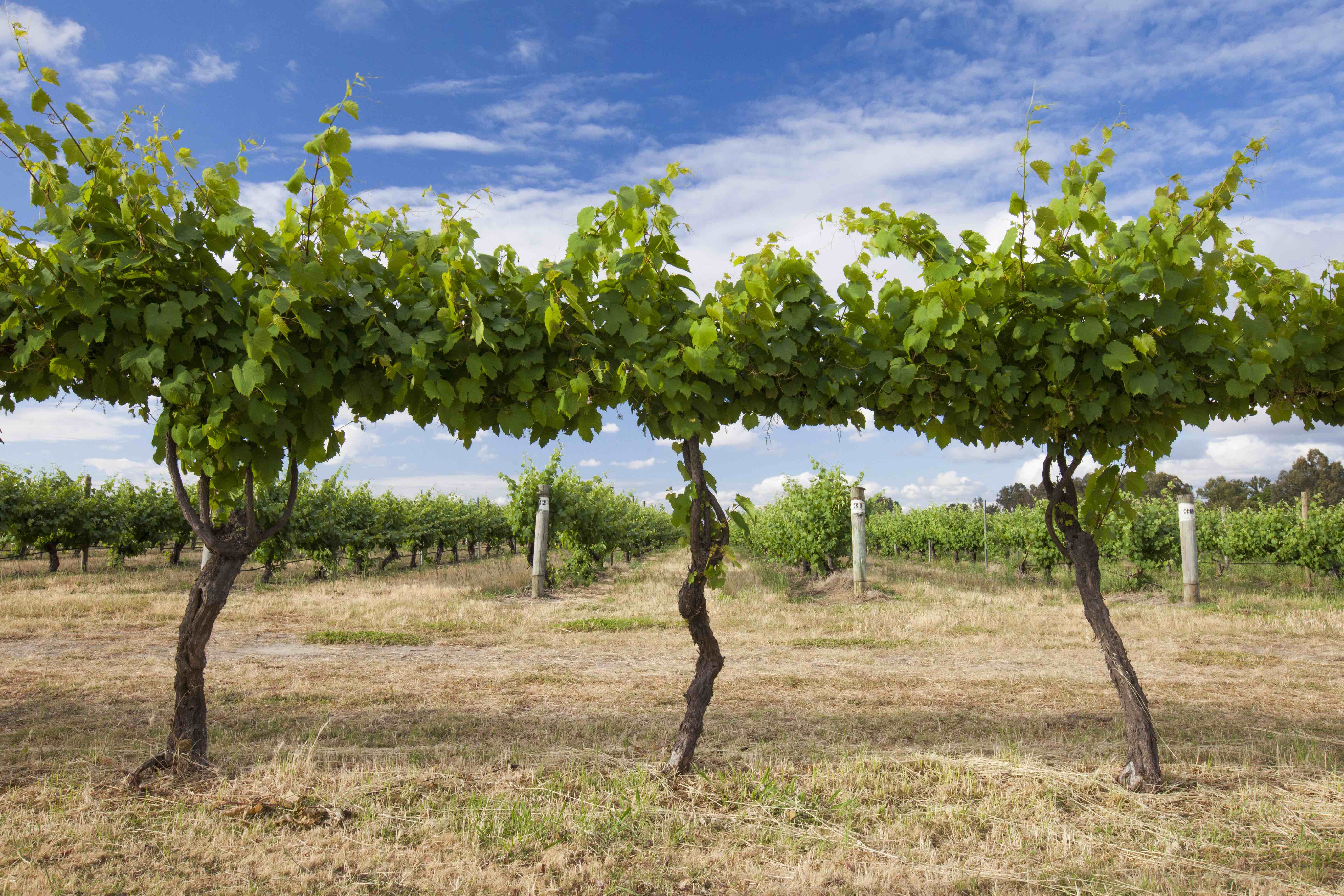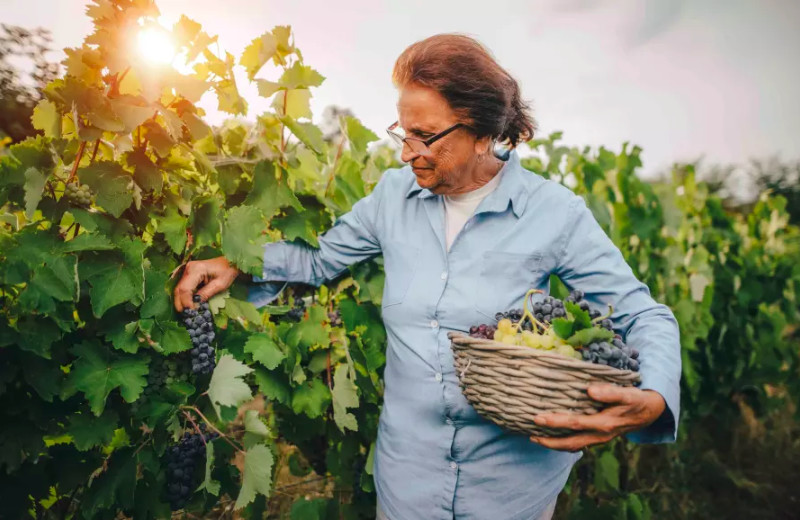
What does climate mean for wine?

Climate events can have a big impact on the timing of grape growth and harvesting, so how can we use predictions to help winegrowers plan for the best drop?
Published 10 May 2019
Common wisdom suggests white wine for warmer days and red for cool days, but how climate and weather are connected with grape and wine quality is a complex subject.
Unusually warm weather during the growing season can cause grapes to develop rapidly and mature earlier at a warmer time in the season, impacting wine flavour and composition.

When the grapes develop too quickly as a result of high temperatures, they can accumulate more sugar, but have less acid causing subsequent wines to be unbalanced and high in alcohol.
In contrast, extremely cool temperatures can have the opposite effect, impacting wine quality by delaying berry development which reduces the formation of sugar and anthocyanins – the chemicals that give red wine its deep colour and tannic structure.

With all of this is mind, and the wine industry contributing over $A40 billion to the Australia economy each year, researchers want to understand more about the potential to predict likely climatic conditions, before the start of grape growing season.
“Australia and its grape growers have many sources of climate and weather variability to contend with,” says Dr Chelsea Jarvis, from the Faculty of Veterinary and Agricultural Sciences at the University of Melbourne.
“This variability comes from the Pacific and Indian Oceans surrounding Australia, and likely plays a critical role in winegrape production,” says Dr Jarvis.
The El Niño Southern Oscillation (ENSO) associated with the Pacific Ocean gives us El Niño events (hot, dry conditions) and La Niña events (cool, wet conditions) – both are a well-known source of climate variability for Australia.
But our climate is also strongly influenced by oceanic events to our west, called the Indian Ocean Dipole (IOD).

ENSO and IOD are both known as ‘climate drivers’ and result from unusually warm or cool sea surface temperatures combined with atmospheric changes such as the reversing of trade winds.
“Although climate drivers like ENSO and the IOD have a significant effect on temperatures across many of Australia’s wine regions, we didn’t know if they also affect grape maturity timing, and how,” says Dr Jarvis.
“We wanted to bridge the gap between climate science and winegrape responses.”

Environment
Farming the future
A research team, made up of Dr Jarvis, Professor Snow Barlow and Professor Richard Eckard from the University of Melbourne, alongside Dr Rebecca Darbyshire from NSW Department of Primary Industries, and Dr Ian Goodwin from Agriculture Victoria, combed through thousands of long-term weather and grape records to understand more about the climate-wine relationship.
Historic vintage data from 45 different vineyard blocks in 15 different wine regions stretching across four Australian states were collected, ranging from 17 to 75 years of data.
‘Maturity timing’ was the day the grapes reached a certain sugar level approximate to when they would be harvested.
“By comparing the date the grapes reached maturity each vintage, we could determine how maturity timing varied from vintage to vintage,” says Professor Barlow.
Climate drivers are not active all of the time, as active events are interspersed with neutral conditions. So, the team performed analyses to determine if winegrape maturity timing varied significantly during ENSO events alone, IOD events alone, both ENSO and IOD combined, and neutral periods.

“Our analysis found that combined ENSO/IOD events and IOD events alone had the most significant impacts on maturity, whereas ENSO events, when occurring alone, had little to no impact on maturity,” says Professor Barlow.
The variation may be partly explained by the difference in spatial impact of the IOD and ENSO: the IOD mostly affects areas in southeast Australia and Western Australia, which are prime winegrowing regions, whereas ENSO mainly impacts Australia’s east coast, says Dr Jarvis.
“The IOD is also most active during spring, when temperatures have been shown to have the greatest impact on grapevine growth and maturity including earlier bud break with more rapid, sustained growth throughout the growing season.”

Environment
We can have urbanisation and enough to eat
During combined ENSO and IOD events, there was an average difference of 42 days between the earliest and latest day of maturity. This means that a winegrower could pick their Shiraz on 30 January one vintage and not until 13 March in another vintage, depending on whether or not a climate driver was active.
IOD event vintages also had significant impact on maturity timing for most vineyards, with a difference of 24 days between the earliest and latest day of maturity.
Professor Eckard says that the study also revealed that some cultivars (short for cultivated varieties) had greater changes to maturity timing than other cultivars of the same vintage during a climate driver event.
“For example, maturity timing of Riesling in the Barossa Valley did not change significantly during combined events, but maturity timing of Barossa Valley Cabernet Sauvignon was almost 20 days earlier during the same type of combined event.,” Professor Eckard says.
For a winegrower, this would mean they harvest two different grapes around the same time.

“Using climate driver information such as ENSO and IOD predictions, in the context of winegrapes could be a way to improve seasonal forecasts for grape growers and wine makers,” Dr Jarvis says.
“Impacts of past climate drivers could be assessed on a regional basis, enabling viticulturalists to review what actions and management techniques were beneficial during past vintages and apply those actions to predicted seasonal conditions,” says Dr Jarvis.
She says both ENSO and IOD can usually be predicted before the start of the grape growing season so winegrowers could ensure that the vineyard soil is fully saturated before a dry season is expected or pruning methods could be used to delay bud break which would also delay maturity, spreading out the harvest period.
By using both historical vintage data and the latest in seasonal climate prediction, these researchers hope that climate science and winegrape production can be combined to produce the best possible wine in the future.
A forum: Wine Quality and Style in the Face of a Changing Climate will be hosted by Professor Barlow and the Faculty of Veterinary and Agricultural Sciences on May 13, 2019.
Banner: Getty Images


